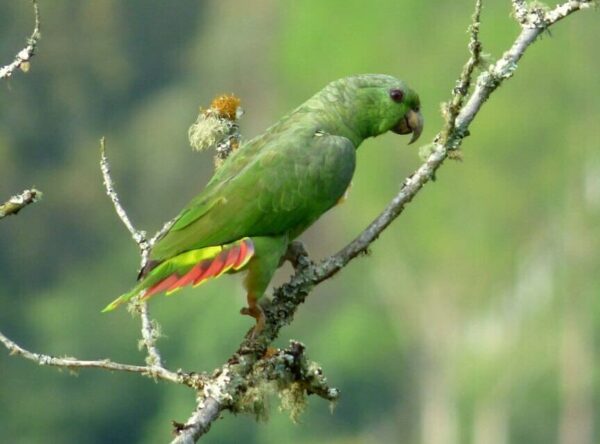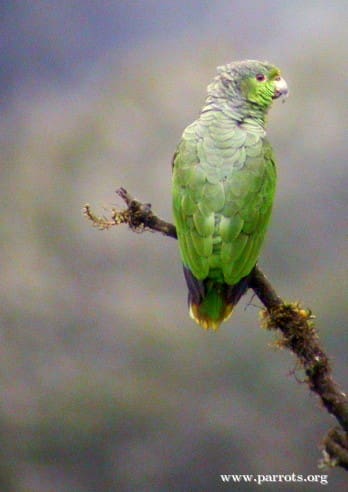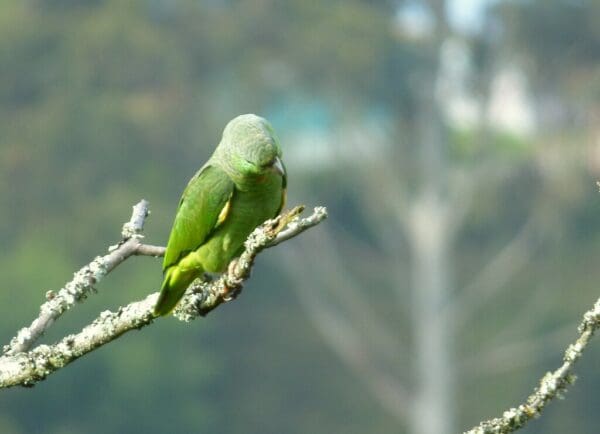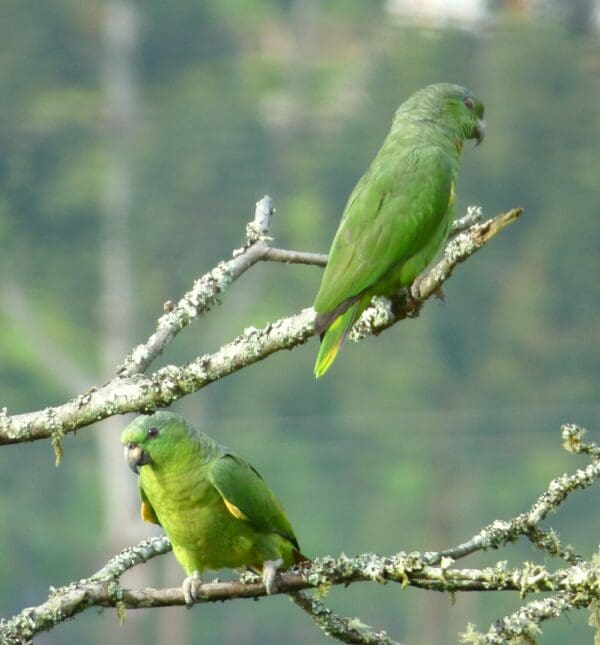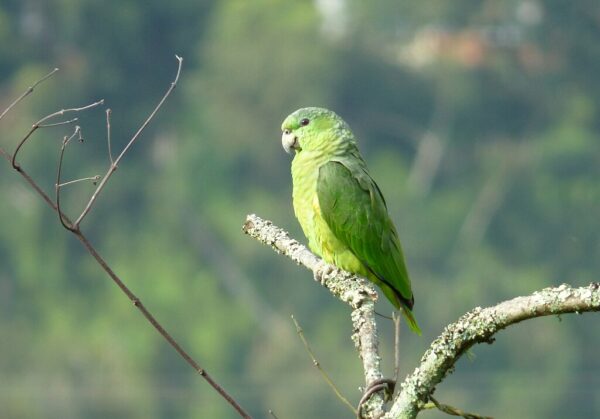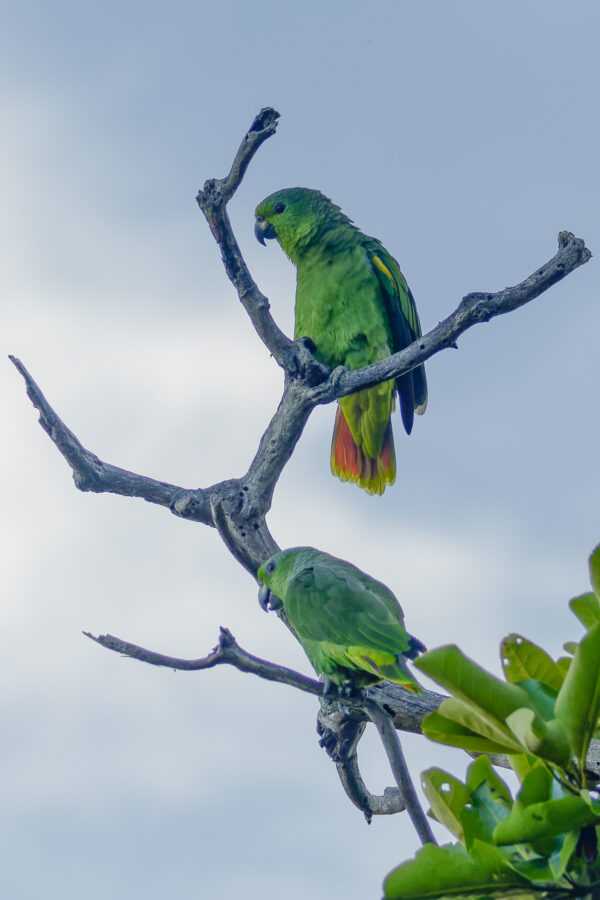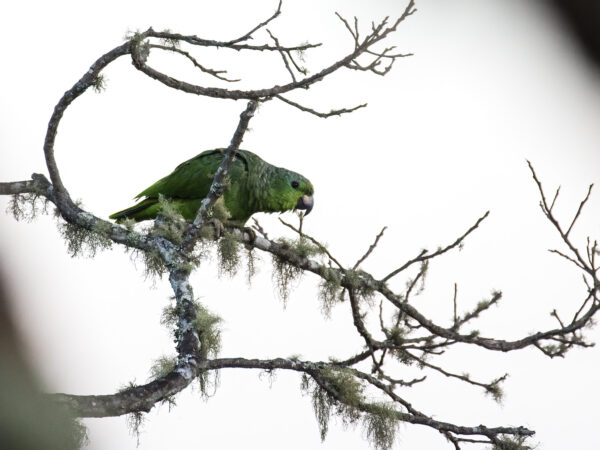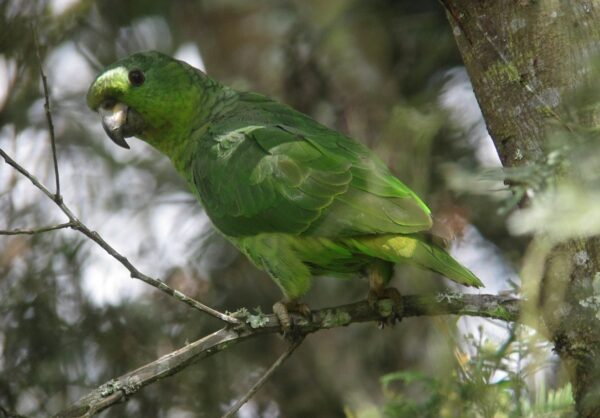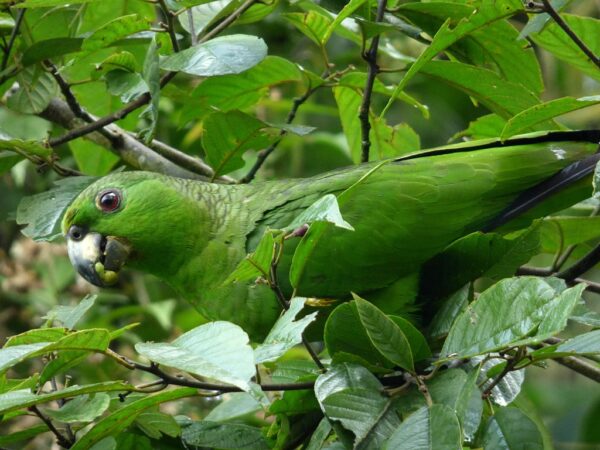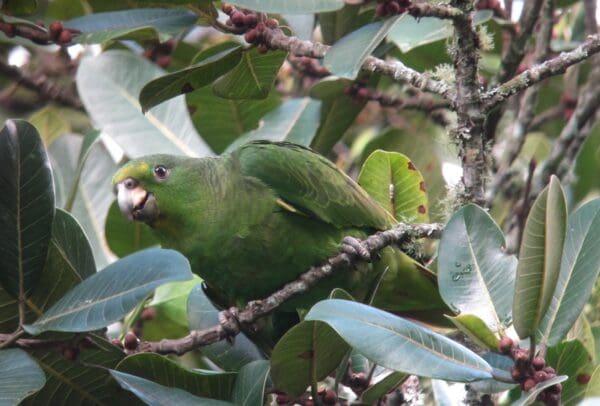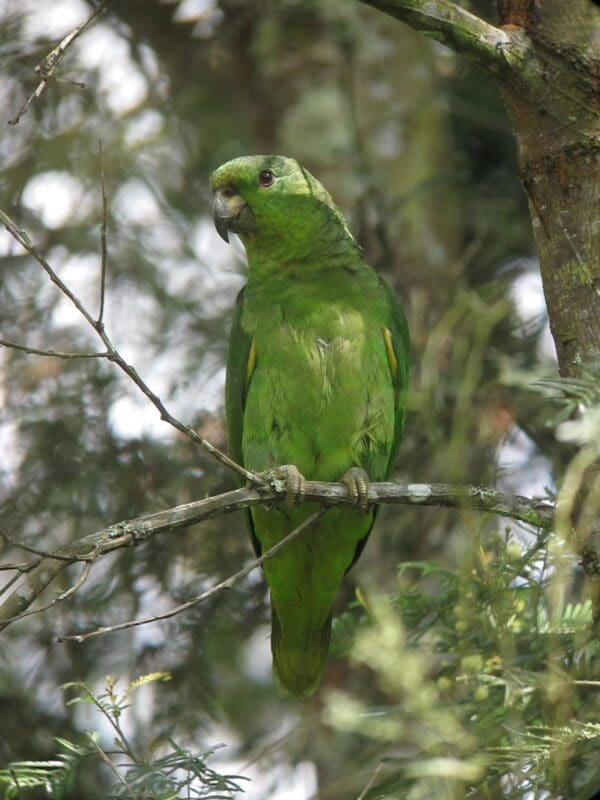Scaly-naped Amazon
Also known as:
Scaly-naped Parrot, Mercenary Amazon, Tschudi's Amazon, Mountain Parrot, Gray-naped or Colombian Amazon (A.m. canipalliata)
Also known as:
Scaly-naped Parrot, Mercenary Amazon, Tschudi's Amazon, Mountain Parrot, Gray-naped or Colombian Amazon (A.m. canipalliata)
![© Alejandro Bayer Tamayo [CC BY-SA 2.0] via Wikimedia Commons A wild Scaly-naped Amazon perches on a mossy branch](https://parrots.org/wp-content/uploads/1990/11/Scaly-naped-Amazon_Alejandro_Bayer_3-e1732808954426-100x100.jpg)
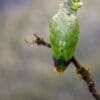
![© Alejandro Bayer Tamayo [CC BY-SA 2.0] via Wikimedia Commons A wild Scaly-naped Amazon peers at something interesting](https://parrots.org/wp-content/uploads/1990/11/Scaly-naped-Amazon-Alejandro_Bayer_5-100x100.jpg)
![© Alejandro Bayer Tamayo [CC BY-SA 2.0] via Wikimedia Commons Wild Scaly-naped Amazons perch on a branch](https://parrots.org/wp-content/uploads/1990/11/Scaly-naped-Amazon-Alejandro_Bayer_1-100x100.jpg)
![© Alejandro Bayer Tamayo [CC BY-SA 2.0] via Wikimedia Commons A wild Scaly-naped Amazon perches on a branch](https://parrots.org/wp-content/uploads/1990/11/Scaly-naped-Amazon_Alejandro_Bayer_7-100x100.jpg)
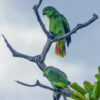
![© Nick Athanas [CC BY-SA 2.0] via Flickr A wild Scaly-naped Amazon perches on a mossy branch](https://parrots.org/wp-content/uploads/1990/11/Scaly-naped-Amazon-lg-Nick-Athanas-100x100.jpg)
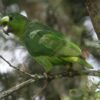
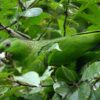
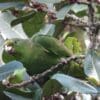
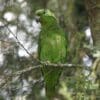
DID YOU KNOW?
Little is known about the habits of the Scaly-naped or Mercenary Amazon. It is a very shy bird.

Amazona

mercenarius
Size:
34 cm (13.2 in)
Weight:
300 g (10.5 oz)
Subspecies including nominate:
two: A.m. mercenarius, A.m. canipalliata
Colour Adult:
A.m. mercenarius: Both adults dark green feathers on crown to nape, tinged dull grey/blue and tipped with dull black; red bases to secondary feathers 1 to 3, the remainder green; yellow carpal edge, mixed with orange/red; tail green with wide yellow/green band, side tail feathers banded with red and blue/purple near end, the most outside feathers margined with blue/purple. Beak grey and horn coloured. Eye ring pale grey, eye red.
A.m. canipalliata: Both adults as in mercinaria but red wing speculum replaced by hidden maroon marks at bases of secondaries 1 to 3.
Colour Juvenile:
As in adult but with pale horn-coloured beak tinged with grey. Eye brown.
Call:
Wide variety of sounds. Trills, whistles, goose-like calls, screeches and grating sounds. Harsh staccato in flight and while perched. Some calls melodious.
More Information:
Content Sources:
CITES
BirdLife International
Cornell Lab of Ornithology/Birds of the World
Parrots: A Guide to Parrots of the World, Juniper and Parr, 1998
Parrots of the World, Forshaw and Cooper, 1977. 2010 edition
Parrots of the World, Forshaw, 2006.
Parrots in Aviculture, Low, 1992.
Captive Status:
Very rare
Longevity:
—
Housing:
Aviary or suspended cage, minimum length 3 m (9.8 ft).
Diet:
Fruit such as: apple, pear, orange, cactus fruits, pomegranate, etc, forming about 30 percent of diet; vegetables such as: carrot, celery, green peas and beans, corn; also green leaves such as: Swiss chard, sowthistle, lettuce, dandelion; spray millet; small seed mixture with limited oily and sunflower seeds; cooked beans and pulses, and complete kibble.
Enrichment:
—
Nest Box Size:
—
Clutch Size:
Not recorded.
Fledging Age:
—
Hatch Weight:
—
Peak Weight:
—
Weaning Weight:
—
World Population:
Unknown, decreasing.
IUCN Red List Status:
Least Concern
CITES Listing:
Appendix II
Threat Summary:
There is evidence of a population decline although overall numbers are not known. Threatened by deforestation: is considered to have a medium dependency on forest habitat, and tree cover is estimated to have declined in its range by 4.6% over the past three generations. Therefore, it is tentatively suspected that this may have led to a 1-19% decline in the species’ population over the same period.
Range:
A.m. mercenarius: Mountains of N Bolivia, in La Paz, Cochabamba and W Santa Cruz, north to N Peru and W Ecuador.
A.m. canipalliata: Both slopes of Andes in W Ecuador to W Colombia, north to Cundinamarca and SW Antioquia; also probably Sierra Nevada de Santa Marta, Sierra de Perifa and mountains of NW Venezuela.
Habitat:
Found in hill and mountain forest in upper tropical, subtropical and temperate areas. Includes open woodland with large trees, open forest on ridges and to treeline in wooded valleys and ravines in paramo zone. 800-1600 m (2624-5248 ft).
Wild Diet:
Little information on diet but has been observed taking figs and unidentified fruits in Colombia. May also take maize.
Ecology and Behaviour:
Found usually in pairs or small flocks with larger groups moving to and from communal roosts to feed. Feedings morning and afternoon.
Clutch and Egg Size:
Clutch size unknown, ovate eggs, 35.5 x 28.0 mm (1.4 x 1.1 in).
Breeding Season:
March-May
Related Links:
—
